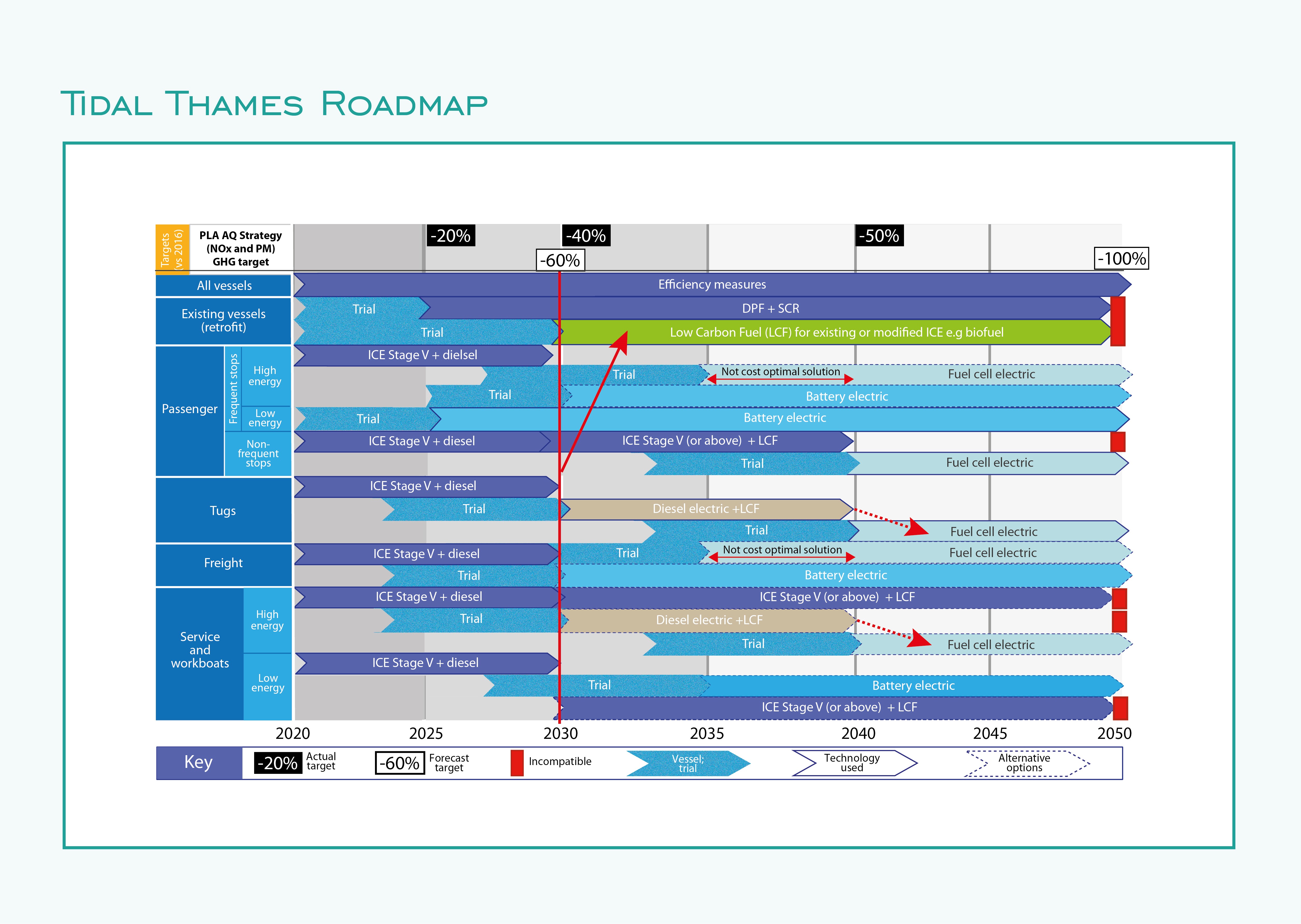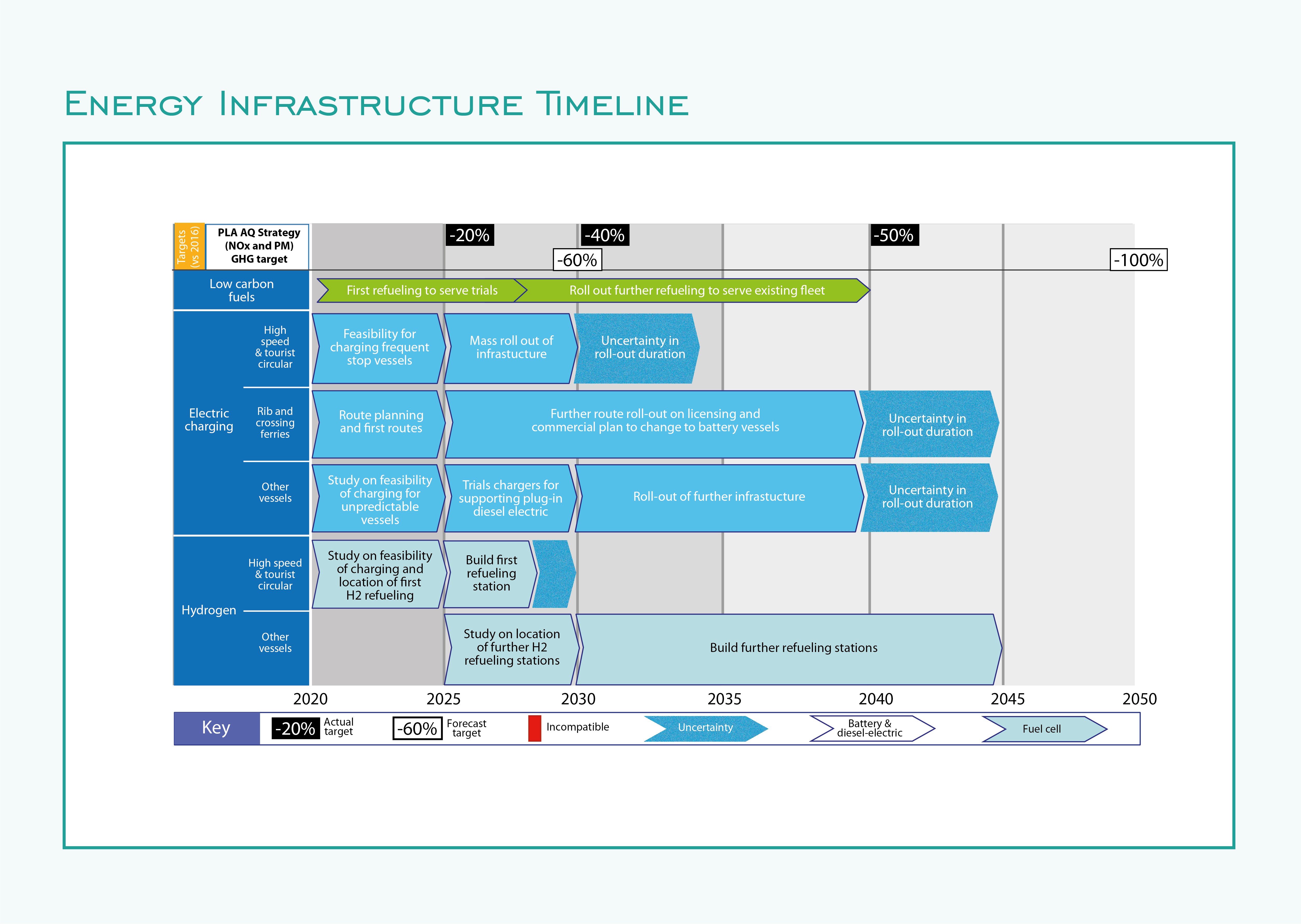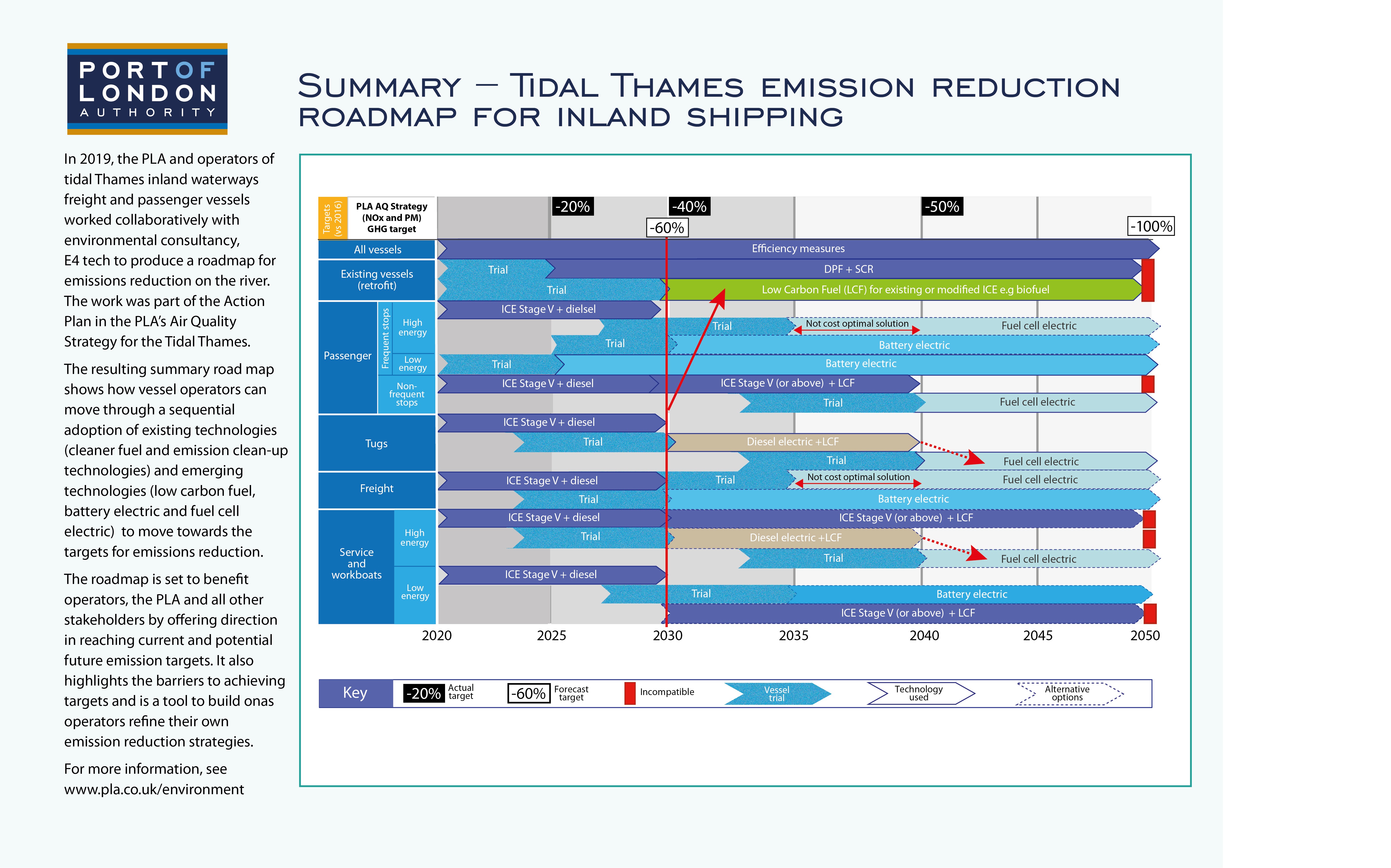Emissions reduction roadmap usable assets
The Thames is home to the UK’s largest fleet of inland vessels. These vessels will require ultra-low or zero-emission technologies to minimise emissions as air quality targets tighten, they move towards the Net Zero target, and the use of the river for freight and passenger increases.
The completed Inland fleet roadmap recommended the best technologies to meet current and potential emission targets through techno-economic analysis based on currently available technology and research. For existing vessels, ultra-low emissions can be achieved by retrofitting vessels with advanced exhaust clean-up and through the use of low carbon fuel for existing or modified ICE. For new build vessels, the candidate technologies that could achieve ultra-low emissions are diesel (or low carbon fuel) hybrid electric drive or diesel (or low carbon fuel) drive with advanced exhaust clean-up. For zero emission, the candidates are battery electric drive or hydrogen fuel cell drive.
The emission reduction roadmap can benefit operations, the PLA and all other stakeholders by offering direction in reaching current and potential future emission targets. It also highlights the barriers to achieving these targets and serves as a tool to build upon as operators further define their own emission reduction strategies.
To assist in dialogue around the topic we have provided here free-use jpegs of key graphics from the document. If you need anything further, contacts us: [email protected]
| Click to enlarge | ||
Emissions reduction roadmap for the tidal Thames  |
Energy infrastructure roadmap for the tidal Thames  |
One page summary document Emissions reduction roadmap for the tidal Thames  |
Read the full report: Emission Reduction Roadmap for Inland Shipping on the Tidal Thames
Back to Air Quality and Green Tariff
Page updated 17/2/2022

